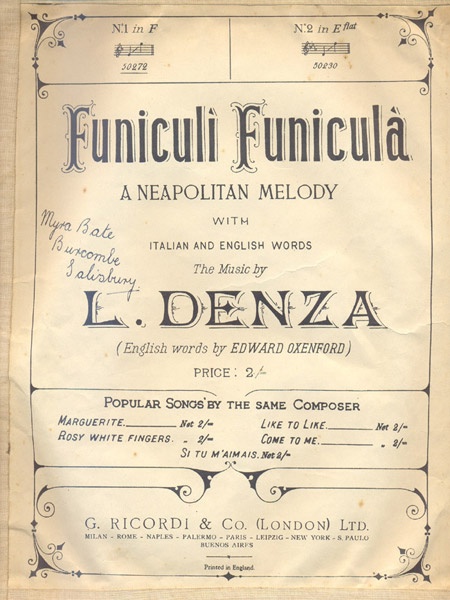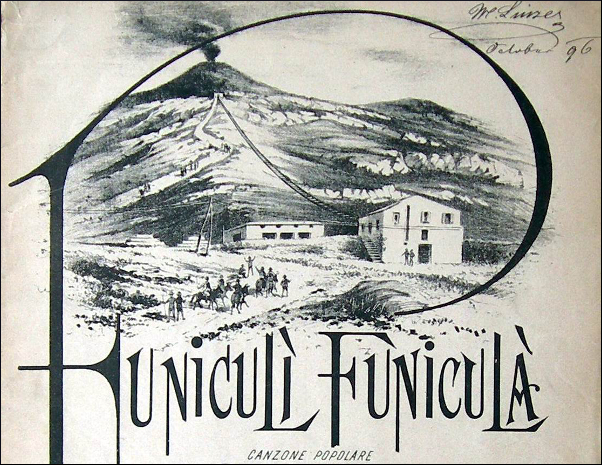
- Funiculì Funiculà
- Released in: 1880
A classic Neapolitan song, well-known around the world,it honors the 1879 launch of the first funicular railway to Mount Vesuvius.

A classic Neapolitan song, well-known around the world,it honors the 1879 launch of the first funicular railway to Mount Vesuvius.
“Funiculì Funiculà” is a classic Neapolitan song, well-known around the world. It was written in 1880 by journalist Giuseppe Turco and composed by Luigi Denza, and it honors the 1879 launch of the first funicular railway to Mount Vesuvius. The title can be more or less translated as, “Funicular up, funicular down,” which obviously expresses the “up and down” movement of the new technology, which represents progress in the eyes of the authors. The lyrics read: “Né, jamme da la terra a la montagna! / Nu passo nc'è!” (Let’s go: from the ground to the mountain / there is only one step!) From the railway, “se vede Francia, Proceta e la Spagna...” (you can see France, Procida, and Spain), and people are invited to hop in: “Jamme, jamme, 'n coppa jamme jà” (Let's go, let's go in). “Jamme” means “andiamo” (to go), and it’s a direct evolution of the Latin “ire.” “‘Ncoppa” means “sopra” or “in cima” (above) in regular Italian, and might derive from “incoppare,” which means to fill a cup or recipient to the top.
At the same time, this song is a tribute to Mount Vesuvius. It recalls the ancestral fascination with the famous volcano: “Addó lu fuoco coce, ma se fuje / te lassa sta … E nun te corre appriesso, nun te struje / sulo a guardà” (Dove il fuoco brucia ma se corri ti lascia stare / e non ti corre appresso, non ti consuma solo a guardarlo). “Coce” derives for “cuocere,” or “to cook,” and “consuma” from “distruggere,” or “destroy.” As always happens in traditional Neapolitan music, the lyrics also tell a love story: “La capa vota, vota, attuorno, attuorno / attuorno a tte!” (La testa gira, gira, intorno, intorno / intorno a te). Figuratively, “far girare la testa” (to make someone’s head twist) means that someone has fallen in love. The lyrics continue: “Stu core canta sempe nu taluorno / Sposamme, oje né!” (Questo cuore canta sempre un nenia / sposiamoci, oh bella mia!). “Taluorno” is something of a monotone chant, which derives from so-called “prefiche,” women paid to cry in funerals. In the speaker’s head, there is always a chant: “Marry me today.”

The song attained global success and has been covered many times by different artists around the world, including very famous singers and tenors, like Luciano Pavarotti and Andrea Bocelli. It was also incorporated by classical composer Richard Strauss into his “Aus Italien” tone poem. Unfortunately, the funicular railway was destroyed in Mount Vesuvius’ eruptions in 1906 and 1944, and today, only a small fragment remains visible.